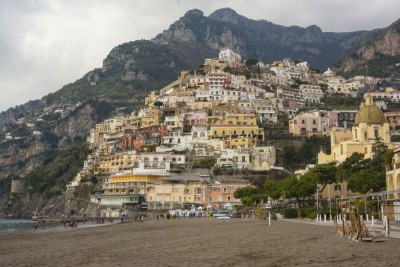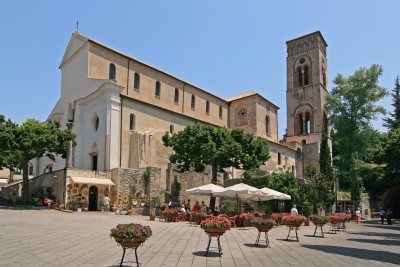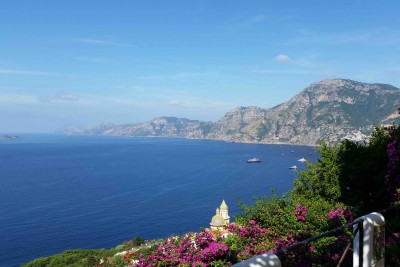Vietri and its Ceramics
For centuries this small town just outside Salerno has been producing ceramics




At the Southern end of the Amalfi Coast and with its small churches with majolica-covered domes and the tile-covered houses, Vietri sul Mare seems suspended between heaven and earth.
Founded by Etruscan, the town was later dominated by the Samnites, the Lucanians and finally by the Romans.
The Duomo of Vietri (#1 on the map), or Chiesa di San Giovanni Battista (St. John the Baptist), with its majestic dome and high bell tower, is located at the highest point of the old center of town and dates back to the 17th century.

Designed in late Renaissance style, it is famous for the cusp of the bell tower covered with painted pottery that also characterize the altars inside the church.
Other interesting places for tourists in Vietri sul Mare are the churches scattered around the town and hamlets around it, such as the Chiesa di Santa Margherita di Antiochia (#2), in Albori.
 Santa Maria di Antiochia
Santa Maria di Antiochia
Also of interest is the Chiesa della Madonna delle Grazie (#3), in Benincasa.

Chiesa della Madonna delle Grazie
Also of interest, at the end of town in the direction of Salerno, is the Torre Crestarella (#4), an ancient watchtowers built as part of a surveillance system that stretched across the Amalfi Coast.

Torre Crestarella
Do not miss Palazzo della Guardia (#5), near the Chiesa di San Giovanni Battista, a splendid example of Baroque art with majolica floors.

Palazzo della Guardia
Ceramics has a very old history in Vietri. In 899 there was a trade in vases and tableware from Amalfi and Salerno to Taranto and documents from the 15th century testify exports to other regions.
Religious objects such as holy water fonts for houses and the votive tiles in the lanes and small streets from Marina di Vietri to Molina, Dragonea, Albori and Raito are from the 17th century.
At the beginning of the 19th century the town started producing kitchenware decorated with simple and floral motifs. Floor and wall tiles were also made at this time.
The most fertile period from a creative point of view started in the 1920s when many foreign visitors, mostly German, came to work in the factories in Vietri.
They expressed their art with the natural and human elements of the area: fishermen and women by the pump, boats and the sea, babies at their mother's breast, the sun and the moon and the characteristic donkey. But their production also had elements from their own culture.
The classic themes in Delker and Kowaliska such as the panels showing Hector and Andromache, the mermaids' coast of Odysseus or the sweet face of the Madonna with Northern European colors and the multicolored nativity scenes of Hannasch.
This is the so-called "German Period" which ended in 1947, not before it had changed the style completely and created new shapes and decorations. Vietri and the other coastal towns have become open-air museums with many ceramic shops to prove that the craft is still alive.
The Museo delle Ceramiche di Vietri (#6), or Vietri Ceramic Museum housed in the Torretta Belvedere, near Villa Guariglia in small town of Raito, high above Vietri, shows the history of this important artistic business.

The museum is divided into three sections: the religious section, the section reserved for everyday objects and the German Period section.
The ceramic shops of Vietri are a show within the show. The narrow streets that rise on the big terrace where the village stands, are lined with small shops and workshops with tiles, plates, holders, ashtrays, vases, figurines, tea and coffee services, sacred objects and the famous donkeys, an ‘invention’ of the German potters.
For printing our Vietri Guide (facing pages) you can download the PDF by clicking HERE
For offline reading on your smartphone or tablet, you can download the PDF of our Vietri Guide (single page) by clicking HERE
If you have an Android OS, you will find it in your Download app.
If you have an iPhone or an iPad, open and save it in iBook (free app).
Watch a video about the ceramiche vietresi




